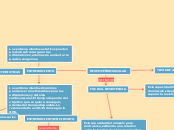Vía espinocerebelosa anterior
In linguistics, syntax is the set of rules, principles, and processes that govern the structure of sentences in a given language, usually including word order.
Propiocepción inconsciente
A compound sentence is a sentence that has at least two independent clauses joined by a comma, semicolon or conjunction. An independent clause is a clause that has a subject and verb and forms a complete thought.
da a conocer la posición muscular, tendinosa y articular
destino
Create your own compound sentences, using the coordinators above.
cerebelo
origen
When independent clauses are joined with coordinators (also called coordinating conjunctions), commas and semicolons, they do more than just join the clauses. They add meaning and flow to your writing.
asta posterior
Transmite información de
A complex sentence is a sentence that contains an independent clause and one or more dependent clauses.
An independent clause can stand alone as a sentence, but a dependent clause even though it has a subject and a verb cannot stand alone.
receptores articulares
An adverbial clause is a group of two or more words that function as an adverb in a sentence.
troco y extremidades superiores e inferiores
los órganos tendinosos
An appositive clause follows another noun or noun phrase in apposition to it; that is, it provides information that further identifies or defines it.
husos musculares
The subject clause is a dependent clause that acts as a subject.
articulaciones
A predicative clause may be introduced by conjunctions - that, whether, whether... or, as, as if, as though, because, lest, the way - or connectives.
The latter may be conjunctive pronouns - who, whoever, what, whatever, which - or conjunctive adverbs - where, wherever, when, whenever, how, why.
músculos
The object clause is a phrase on which a verb performs an action. It falls at the end of a sentence, and is governed by a verb or a preposition.
Recorrido
sinapsis 3
vermis cerebeloso superior tanto ipsilateral como contralateral
tracto espinocerebeloso anterior
en el cordón blanco contra lateral y cordón blanco lateral del mismo lado
protuberancia
See the example below and try to create your own simple sentences.
Tim is driving the red car.
entra por pedúnculo cerebeloso medio
médula espinal
See the example below and try to create your own simple sentences.
Tim is driving the car with his mother.
muchos de los axones de estas neuronas cruzan al lado opuesto y ascienden
sinapsis 2
See the example below and try to create your own simple sentences.
Tim is the driver.
hace sinapsis con las neuronas en el núcleo dorsal en la base del asta gris posterior
sinapsis 1
See the example below and try to create your own simple sentences.
Tim drives the car.
lámina de rexed 7
los axones entran en la médula espinal desde el ganglio de la raíz dorsal
receptor
See the example below and try to create your own simple sentences.
Tim drives.
HNM
receptores intrarticulares
OTG
Función
sensaciones de propiocepción inconsciente
conduce impulsos sensoriales de ambos lados del cuerpo hacia el cerebelo









